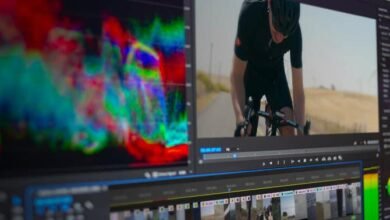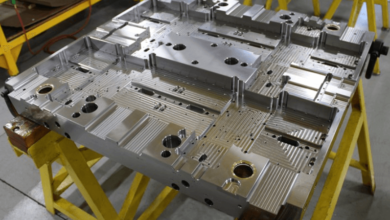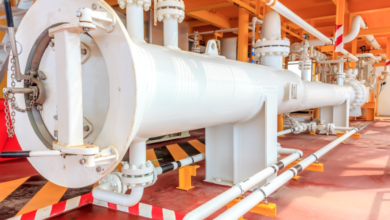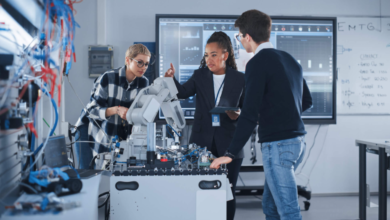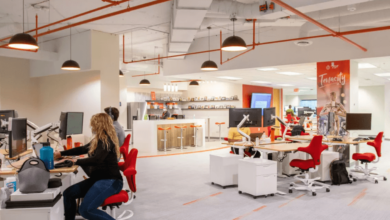Transforming Production with a 5 axis CNC machine
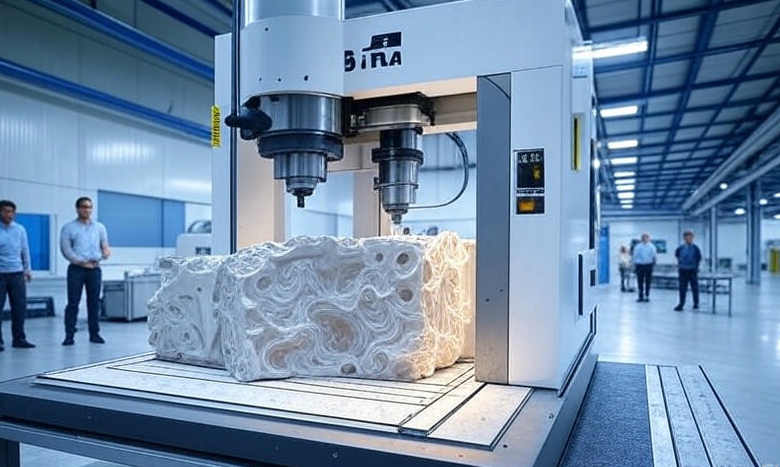
In the rapidly advancing field of manufacturing, the demand for greater precision, speed, and versatility is constant. As industries evolve, so too must the machinery that supports them. The 5 axis CNC machine has emerged as a revolutionary tool that meets the needs of modern production by enabling the fabrication of intricate parts with exceptional accuracy and efficiency.
This article takes an in-depth look at how a 5 axis CNC machine works, its advantages, applications, and how it is changing the face of manufacturing across multiple industries.
What is a 5 axis CNC machine?
A 5 axis CNC machine is a sophisticated piece of equipment designed to move a cutting tool or part along five different axes simultaneously. These include the standard X, Y, and Z axes (which cover up/down, left/right, and front/back movements), plus two additional rotary axes (commonly referred to as A and B or B and C) that allow the tool or table to rotate.
This unique motion capability allows the tool to access virtually any angle on a workpiece, making it ideal for machining complex shapes, curves, and contours that would be nearly impossible to produce with a standard 3-axis machine.
How Does It Operate?
The process begins with a digital blueprint created in CAD (Computer-Aided Design) software. This model is transferred into CAM (Computer-Aided Manufacturing) software, which generates the toolpath instructions (G-code) that the machine will follow.
During operation, the 5 axis CNC machine interprets the code and moves the tool and/or table accordingly. Unlike 3-axis machines that require multiple setups to complete different sides of a part, a 5-axis setup can finish the entire part in one go. This not only saves time but ensures that each cut is made with consistent alignment and precision.
Advantages of a 5 axis CNC machine
1. Single-Setup Machining
Perhaps the most transformative feature of the 5 axis CNC machine is its ability to machine a component from multiple angles without manual repositioning. This reduces setup time and eliminates potential errors caused by part realignment.
2. Higher Precision and Consistency
Because the part remains in a fixed position throughout machining, dimensional accuracy is enhanced. This is especially valuable for components used in safety-critical industries such as aerospace and medical devices.
3. Complex Part Manufacturing
With the flexibility of five axes, parts with deep cavities, undercuts, compound curves, and other intricate geometries are easily produced—something that’s often unachievable with traditional methods.
4. Superior Surface Finish
By keeping the cutting tool at an optimal angle throughout the process, the 5-axis system produces smoother surfaces that often eliminate the need for secondary finishing.
5. Time and Cost Efficiency
Reducing the number of setups leads to faster machining times, less labor, and lower operational costs. Additionally, tool wear is minimized due to better cutting conditions, resulting in long-term savings.
See also: How Technology is Transforming Logistics in Hong Kong
Where It’s Used: Industry Applications
The 5 axis CNC machine is used in a variety of sectors where complexity, accuracy, and repeatability are critical:
- Aerospace: Essential for manufacturing jet engine components, brackets, structural parts, and more.
- Medical: Used to produce orthopedic implants, prosthetics, dental crowns, and surgical tools.
- Automotive: Plays a key role in mold making, engine parts, transmission components, and performance enhancements.
- Defense and Military: Produces components requiring extreme precision and durability.
- Energy: Ideal for machining turbine blades, pumps, and valves in power generation.
Machine Configurations
Several types of 5 axis CNC machine configurations are available, each offering unique benefits:
• Head-Head Type
Both rotary axes are in the spindle head. These are known for high-speed rotation and are great for lighter components.
• Table-Table Type
Both axes are built into the table. These machines are more stable and can handle heavy parts effectively.
• Head-Table Type
One rotary axis is in the head and the other in the table. This hybrid design offers a balanced mix of flexibility and rigidity.
Choosing the right configuration depends on the size and weight of your parts, as well as the type of material you intend to machine.
Considerations When Buying a 5 axis CNC machine
Investing in a 5 axis CNC machine involves evaluating several factors:
• Workpiece Size
Make sure the machine’s working envelope can handle your largest parts comfortably without restricting movement.
• Spindle Speed and Power
Depending on the material—whether it’s soft aluminum or tough titanium—your spindle needs to deliver the right combination of speed and torque.
• User Interface
A simple, intuitive control system such as FANUC, Siemens, or Heidenhain can greatly reduce the learning curve and improve productivity.
• Software Integration
Ensure that the machine is compatible with leading CAM software that can handle 5-axis toolpaths, such as Fusion 360, Mastercam, or PowerMill.
• Support and Service
Reliable post-sale support, spare parts availability, and technical training are crucial for maximizing uptime and ROI.
New vs. Used Machines
If you’re on the fence between purchasing a new or used 5 axis CNC machine, consider the following:
✅ New Machines
- Latest technology and safety features
- Warranties and support included
- Ideal for high-volume, high-precision production
✅ Used Machines
- More affordable upfront
- Good for shops transitioning to 5-axis work
- Ensure a thorough inspection and service history
Both options have value, depending on your production goals and budget.
Leading Brands to Consider
Some of the top manufacturers of 5 axis CNC machine systems include:
- Haas Automation – Offers excellent entry-level 5-axis solutions.
- DMG Mori – Known for precision and cutting-edge technology.
- Mazak – Renowned for performance and reliability.
- Hurco – Great for quick setup and ease of use.
- Okuma – Offers robust machines with strong customer support.
These brands provide machines for all scales of production, from prototyping to high-volume manufacturing.
Conclusion
The 5 axis CNC machine is a cornerstone of modern manufacturing. Its ability to produce highly complex parts in a single setup makes it an invaluable asset across a wide range of industries. From time savings and improved surface finishes to greater design flexibility and precision, the benefits are undeniable.
As manufacturing becomes more complex and customized, investing in a 5 axis CNC machine is a strategic decision that can elevate your shop’s capabilities, efficiency, and competitive edge. Whether you’re building prototypes or full production runs, this powerful tool is a key player in shaping the future of precision engineering.

